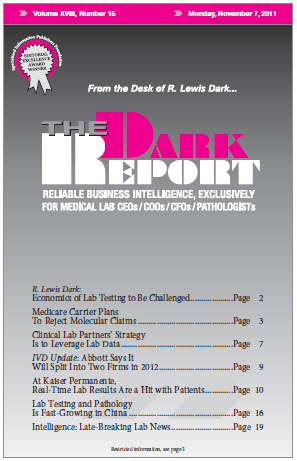CEO SUMMARY: Should patients be allowed to see their own lab test results when they are available to their physicians? Kaiser Permanente believes so. Since 2005, Kaiser Permanente has given members real-time access to most laboratory test results in their personal health record (PHR) on www.kp.org. In fact, viewing laboratory test results is the single …
At Kaiser Permanente, Real-Time Lab Results Are a Hit with Patients Read More »
To access this post, you must purchase The Dark Report.


